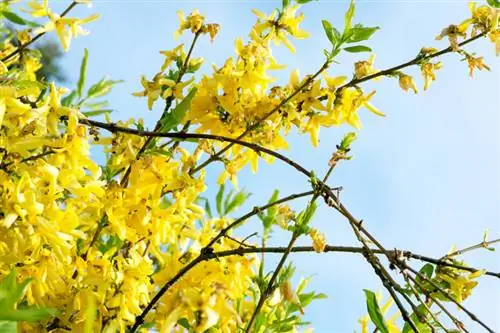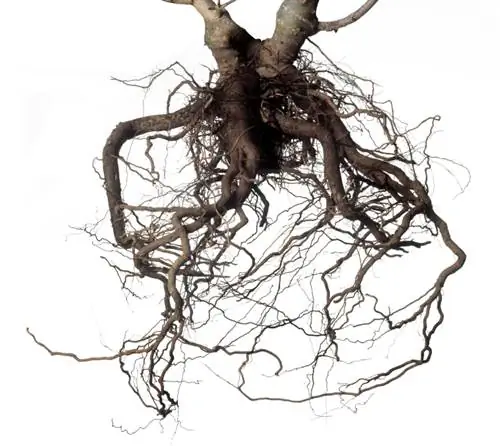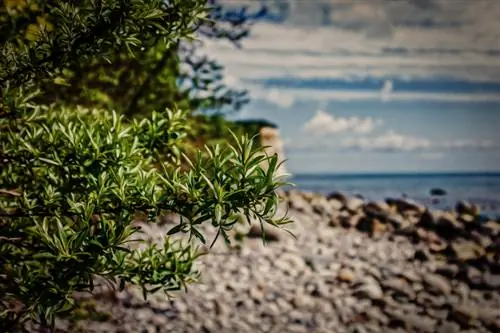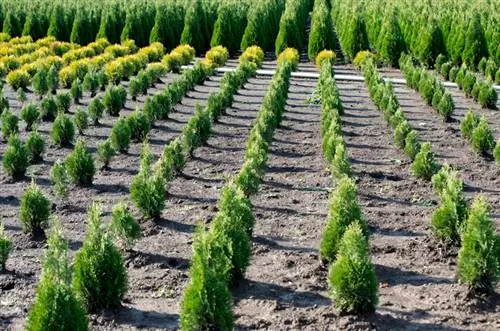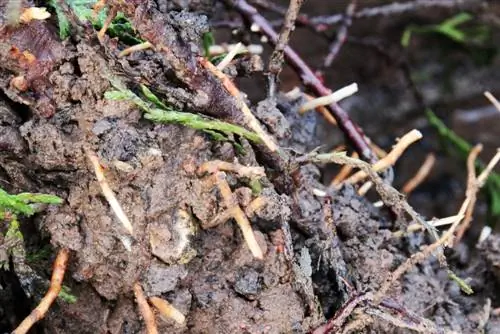- Author admin [email protected].
- Public 2023-12-16 16:46.
- Last modified 2025-01-23 11:20.
Few plants root as quickly as forsythia. This becomes noticeable when you put a forsythia branch in the vase. After just a short time, small roots can be seen. What else you should know about the roots of forsythia.
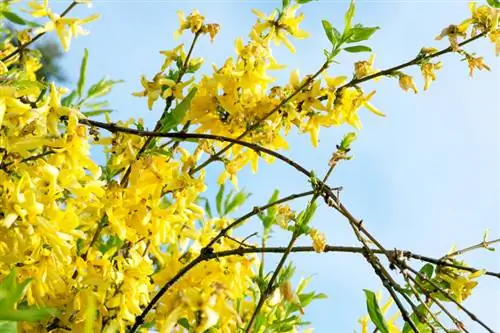
How do forsythia roots grow best?
Forsythia roots grow quickly and easily, both from overhanging shoots touching the ground and from cuttings and sinkers. Root cutting is recommended for bonsai and potted plants to promote compact growth. Make sure to avoid waterlogging and use permeable soil.
Overhanging shoots also form roots
Some varieties of forsythia form long shoots that curve outwards. If they come into contact with soil, they quickly take root.
You can separate the shoots. This will give you cuttings that you can place somewhere else.
If the forsythia is by the pond, the shoots will even take root if the tips reach into the water.
Root formation in cuttings and sinkers
Forsythias are very easy to propagate using cuttings and planters. Small roots grow very quickly on the cuttings, where buds for the flowers and later leaves were left on the shoot.
Even with sinkers, you can assume that roots will quickly form in the individual sections. Cut the shoot beforehand.
Digging up roots when transplantingTo transplant a forsythia, you need to get the root ball out of the ground as much as possible. This involves a lot of effort with older copies.
Often there is nothing left but to cut off part of the roots with a hatchet (€79.00 on Amazon) or a saw.
You may even need an excavator to move large forsythia bushes.
Cutting roots for bonsai and potted plants
If the forsythia is grown as a bonsai or in a pot, you must repot the shrub every year if possible or at least plant it in fresh soil.
This is a good opportunity to prune the root ball so that the shrub grows more compactly.
- Removing the forsythia from the pot
- Shake off the earth
- Cut protruding roots with scissors
- Put plant in new soil
Forsythia roots do not tolerate waterlogging
Always plant forsythia in well-drained soil. When waterlogged, the roots rot. The soil shouldn’t be too dry either. You may need to water more frequently or apply a layer of mulch.
Tips & Tricks
Root residues that remain in the ground when the bush is transplanted or removed often sprout again later. Therefore, remove the root system as thoroughly as possible.

